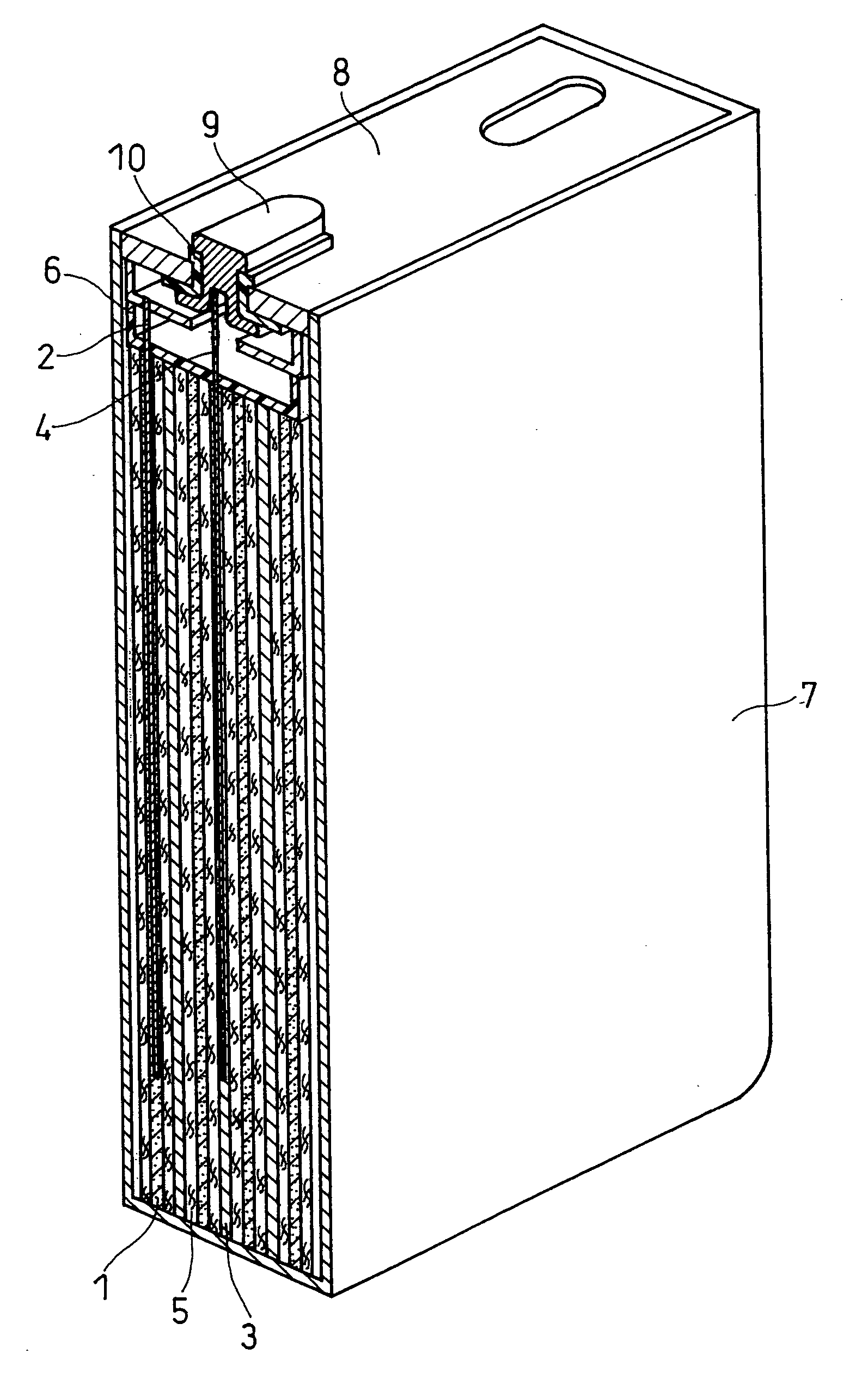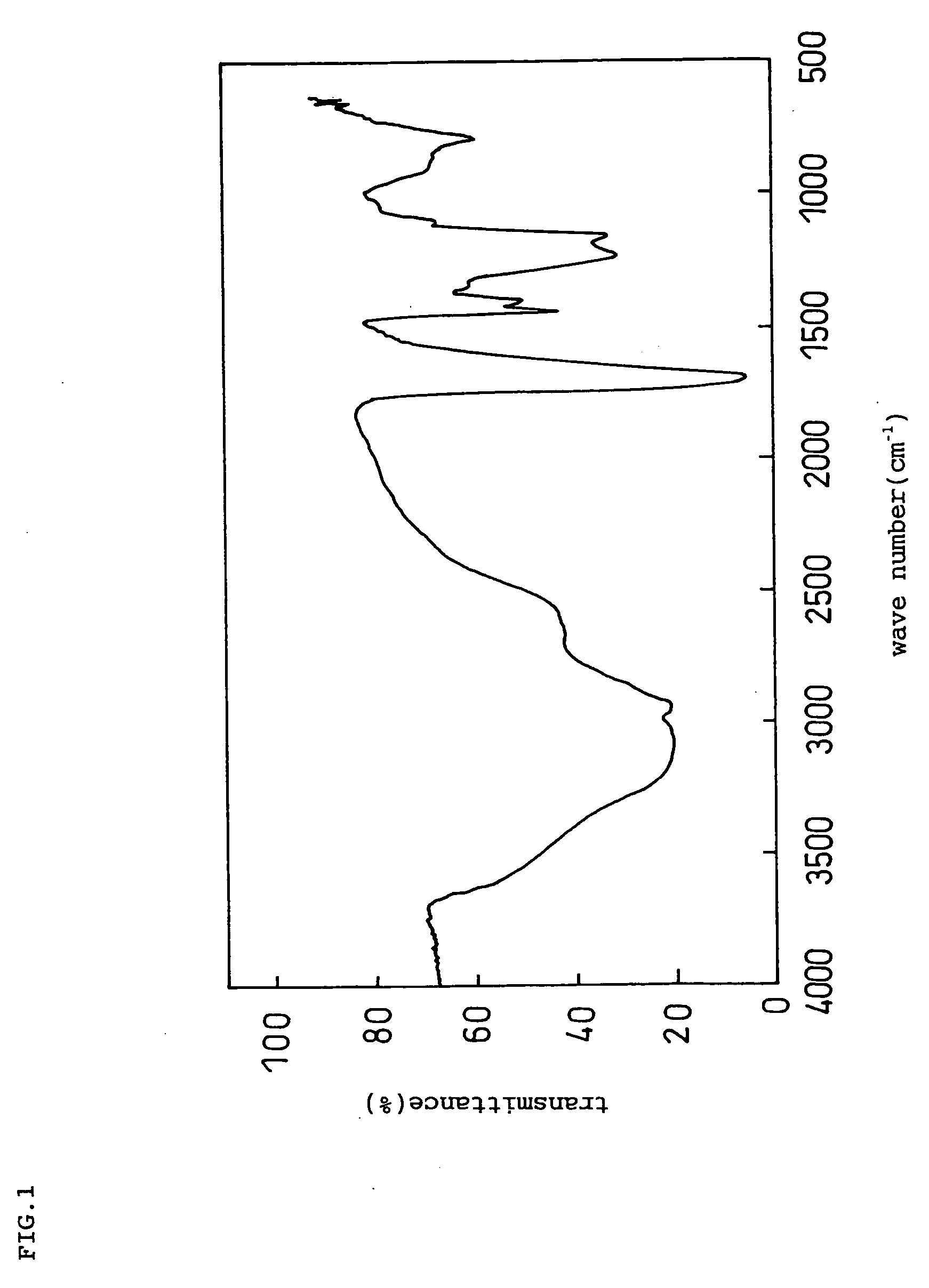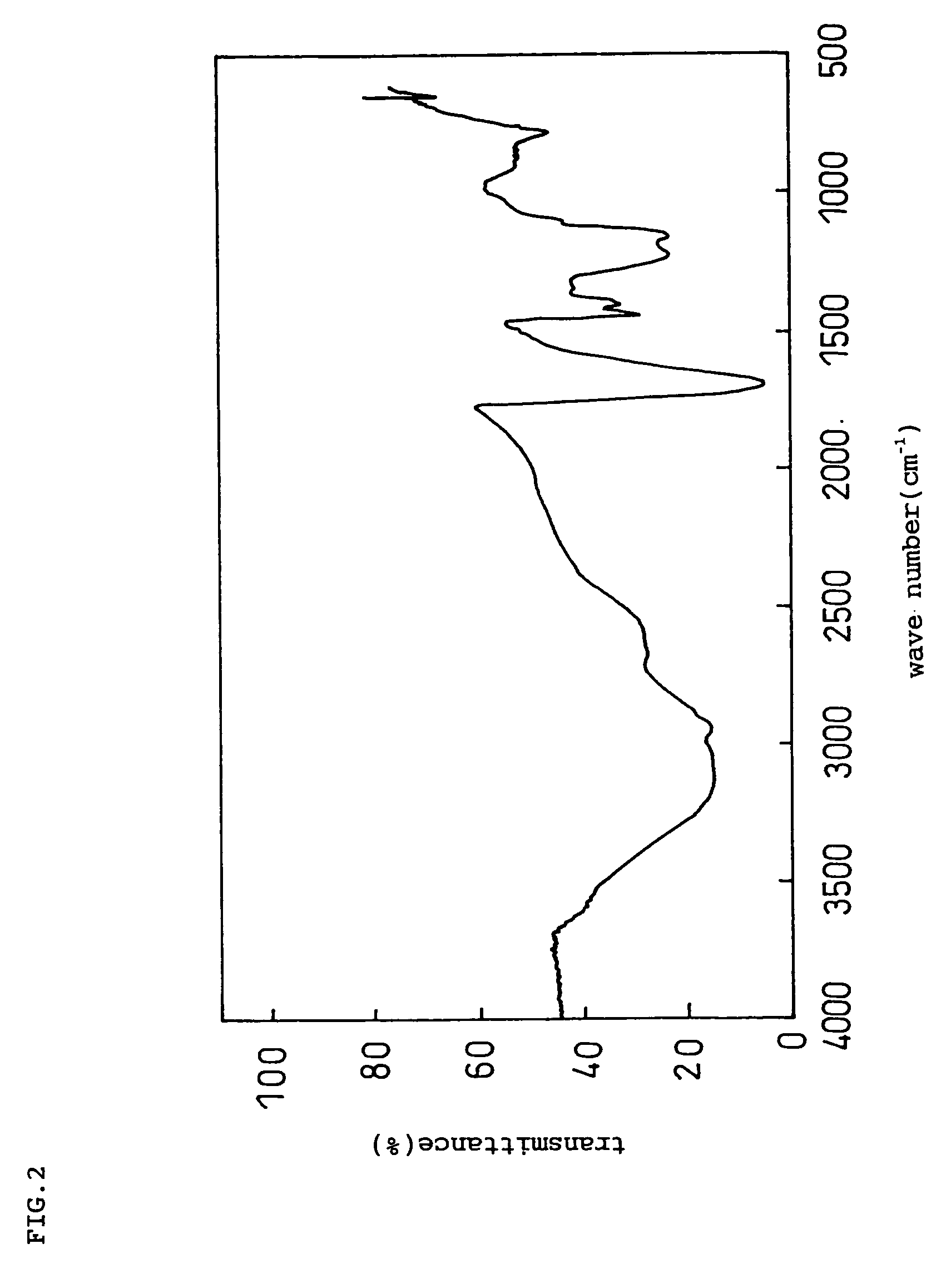Negative electrode for lithium ion secondary battery and lithium ion secondary battery prepared by using the same
- Summary
- Abstract
- Description
- Claims
- Application Information
AI Technical Summary
Benefits of technology
Problems solved by technology
Method used
Image
Examples
example 1
(Batteries 1 to 6)
(Preparation of Negative Electrode)
[0057] An alloy powder comprising Ti and Si, which serves as a negative electrode active material, was mixed with acetylene black serving as a conductive agent and an aqueous solution containing polyacrylic acid (weight-average molecular weight 150000) (available from Wako Pure Chemical Industries, Ltd., polyacrylic acid concentration: 25% by weight) serving as a binder. The amount of polyacrylic acid was 14 parts by weight per 100 parts by weight of the negative electrode active material. The amount of the polyacrylic acid was 10% by weight of all the solid content. The amount of the conductive agent was 29 parts by weight per 100 parts by weight of the negative electrode active material.
[0058] A suitable amount of water (dispersion medium) was added to the resultant mixture, which was then fully mixed to form a negative electrode mixture slurry.
[0059] The slurry was applied onto both sides of a negative electrode current c...
example 2
[0083] Batteries 13 to 18 were produced in the same manner as the battery 4 except for the use of M1-Si alloy powder (M1 is at least one selected from the group consisting of Fe, Co, Ni, and Cu), or M2-Sn alloy powder (M2 is at least one selected from the group consisting of Ti and Cu), shown in Table 2, as the negative electrode active material. In producing the batteries 13 to 18, polyacrylic acid was used as the binder, and the heat-treatment temperature of the negative electrode sheet was 190° C.
[0084] Batteries 19 to 24 were produced in the same manner as the batteries 13 to 18 except for the use of polymethacrylic acid as the binder.
[0085] The alloy powders were prepared by mechanical alloying in the same manner as in Example 1. Electron diffraction in a transmission electron microscope confirmed that the M1-Si alloys have a M1Si2 phase and a Si phase. Also, it confirmed that the M2-Si alloys have a M26Sn5 phase and a Sn phase.
[0086] Using the batteries 13 to 24, the batter...
example 3
[0088] Batteries 25 to 27 were produced in the same manner as the battery 4 except that a Ti—Si alloy was used as the negative electrode active material and the composition of the Ti—Si alloy was varied as shown in Table 3. In producing the batteries 25 to 27, polyacrylic acid was used as the binder, and the heat-treatment temperature of the negative electrode sheet was 190° C.
[0089] Batteries 28 to 30 were produced in the same manner as the batteries 25 to 27 except that polymethacrylic acid was used as the binder.
[0090] The Ti—Si alloy powders of various compositions were prepared by mechanical alloying in the same manner as in Example 1. Electron diffraction in a transmission electron microscope confirmed that the Ti—Si alloys have a TiSi2 phase and a Si phase.
[0091] Using the batteries 25 to 30, the battery thickness at the 1st cycle and capacity retention rate were measured in the same manner as in Example 1. Table 3 shows the results.
TABLE 3BatteryComposition ofthicknessC...
PUM
 Login to View More
Login to View More Abstract
Description
Claims
Application Information
 Login to View More
Login to View More - R&D
- Intellectual Property
- Life Sciences
- Materials
- Tech Scout
- Unparalleled Data Quality
- Higher Quality Content
- 60% Fewer Hallucinations
Browse by: Latest US Patents, China's latest patents, Technical Efficacy Thesaurus, Application Domain, Technology Topic, Popular Technical Reports.
© 2025 PatSnap. All rights reserved.Legal|Privacy policy|Modern Slavery Act Transparency Statement|Sitemap|About US| Contact US: help@patsnap.com



